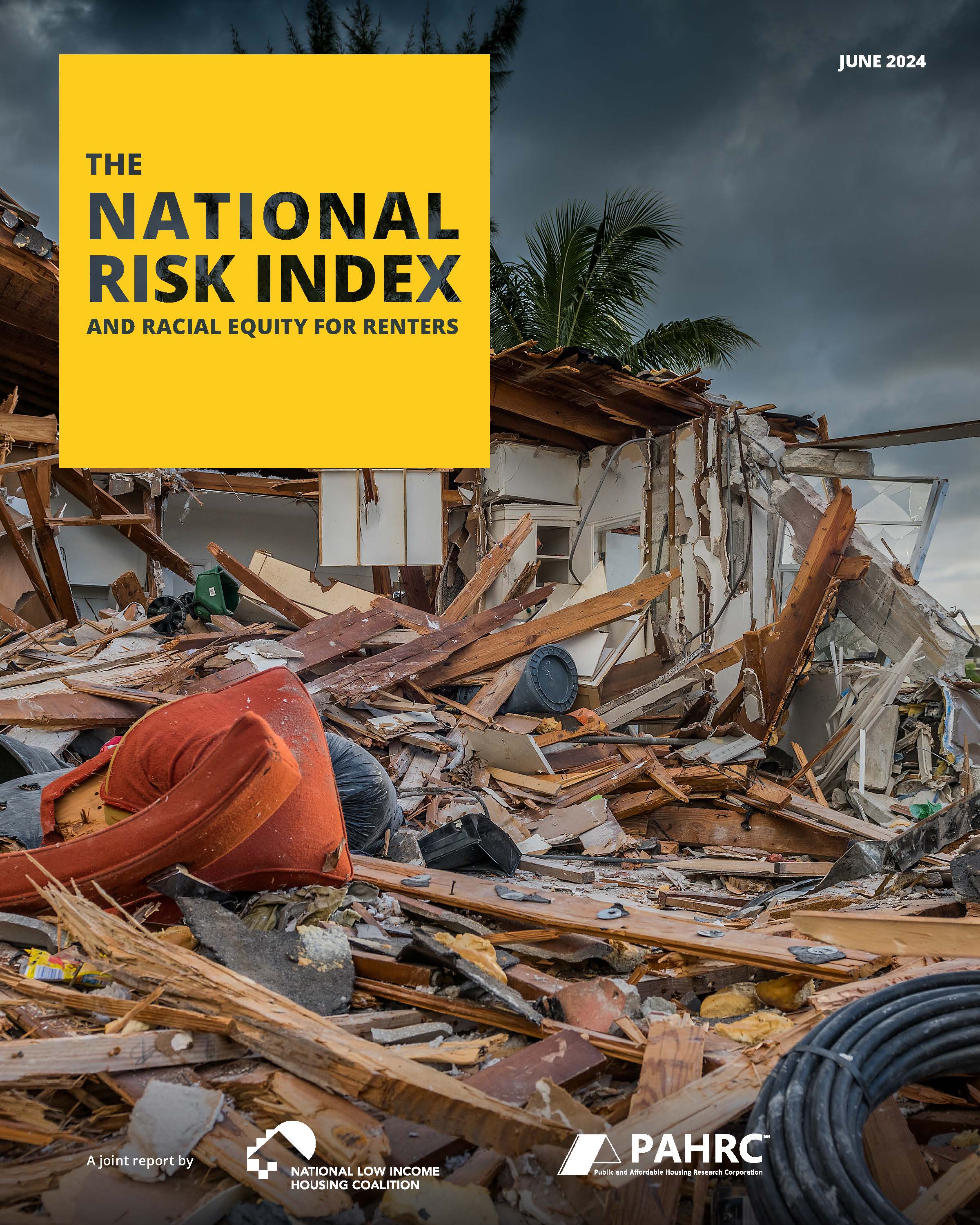NLIHC and PAHRC Report on FEMA’s National Risk Index and Racial Equity for Renters
Aug 07, 2024
NLIHC and the Public and Affordable Housing Research Corporation (PAHRC) released today a joint report assessing whether the Federal Emergency Management Agency’s (FEMA) National Risk Index (NRI) reflects known disparities in natural hazard risk for renters of color.
The report, The National Risk Index and Racial Equity for Renters, concludes that the NRI may insufficiently capture racial and ethnic disparities in risk within states for renters, particularly for Black and Hispanic households. For this reason, the report urges caution in use of the index when allocating mitigation and recovery planning resources for renters.
Research shows that natural hazards disproportionately affect people of color and renters. However, federal funding for disaster mitigation and recovery planning tends to benefit economically advantaged white homeowners and their communities. If the metrics used to guide mitigation and planning – like the NRI – fail to capture existing disparities in natural hazard risk for renters of color, then climate-related disasters will reinforce or exacerbate existing racial disparities.
The report finds that:
- The NRI may insufficiently capture racial and ethnic disparities in natural hazard risk when used to compare census tracts within states, particularly for Black and Hispanic renters.
- The NRI appears to capture racial disparities in risk insufficiently among renters within metropolitan areas where these disparities have been documented.
- FEMA’s decision to incorporate both the NRI and the Climate and Economic Screening Tool in its designation of zones for the CDRZs program has resulted in Black households being better represented in CDRZs than they would have been using only the NRI.
The report urges caution in using the NRI to prioritize communities in the allocation of mitigation and recovery planning resources targeted for renters. Planners and policymakers should consider avoiding the use of NRI risk scores comparing census tracts within states when deciding how to prioritize these resources, or they should supplement the NRI with other metrics that better capture racial inequities. Use of alternative metrics available through the NRI data may also be more appropriate. In the longer term, the NRI may need to be refined to better reflect racial disparities in natural hazard risks. Ultimately, further research is needed to quantify the extent to which the NRI may underestimate risks for renters and communities of color and to understand which components of the NRI must be improved.
Read the report here.
